Operation Meetinghouse: The devastating firebombing of Tokyo during World War II
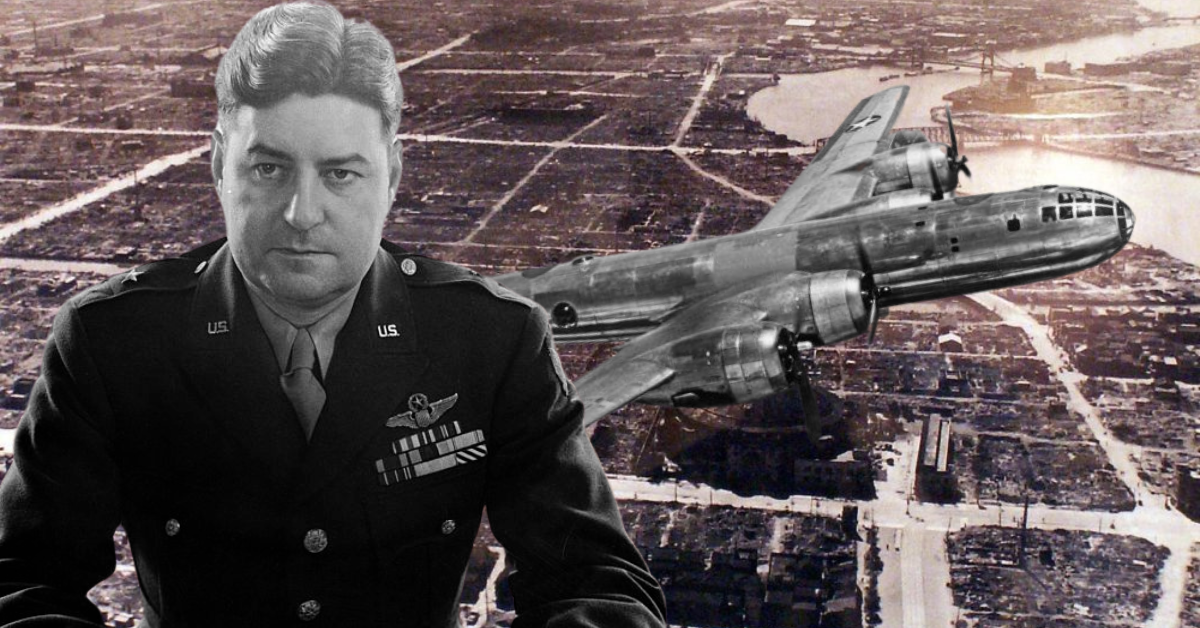
It is difficult to imagine a more serious attack on Japan during World War II than the atomic bombings of Hiroshima and Nagasaki, but it happened. The firebombing of Tokyo in March 1945, the largest air raid of the conflict, killed 100,000 people, displaced over a million residents, and destroyed hundreds of thousands of buildings.
Why did the American military launch this devastating attack on areas where many civilians lived, and should the air strike have been considered a war crime?
The fighting in the Pacific was brutal
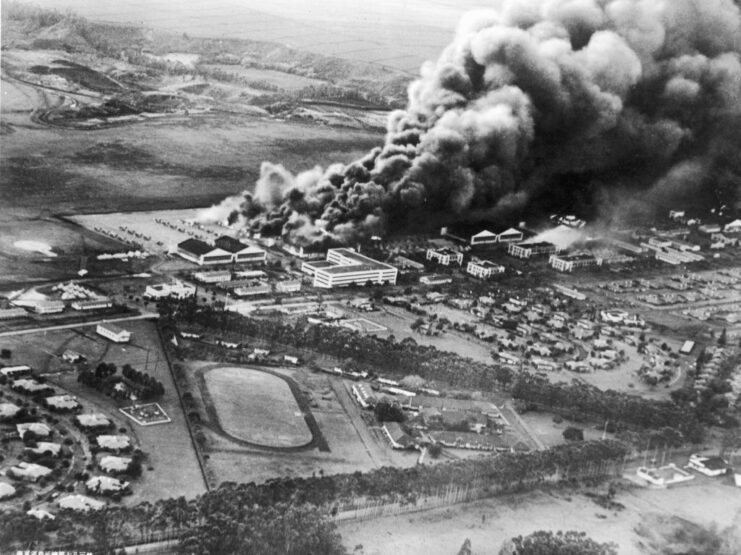
Japan had long planned an aggressive expansion campaign in the Pacific and knew it had to prevent the United States from interfering. Therefore, it was decided to destroy the country’s naval forces, which led to the attack on Pearl Harbor on December 7, 1941. It was expected that by the time the U.S. Navy was rebuilt, Japanese forces would have captured both the Philippines and British Malaya.
The surprise attack led to America’s entry into World War II. Undeterred, the Japanese continued to expand and conquered numerous territories in Southeast Asia and the Pacific. The American forces responded with counterattacks and offensives, such as the Battle of Midway in June 1942, which significantly weakened the Imperial Japanese Navy (IJN) fleet.
By 1944, the Allies had gained significant influence in the Pacific, capturing strategic islands such as Saipan, Tinian and Guam, putting Japan within range of American bombers.
This relentless advance was aimed at weakening the enemy’s ability to wage war. Despite continued fierce resistance, American forces continued their island-hopping campaign, gradually approaching the Japanese mainland. Particularly important was the capture of the Marianas, which enabled the deployment of Boeing B-29 Superfortresses that could reach the land. This prepared the ground for a new phase of strategic bombing, the aim of which was to break Japan’s industrial and civilian morale.
Doolittle Raid
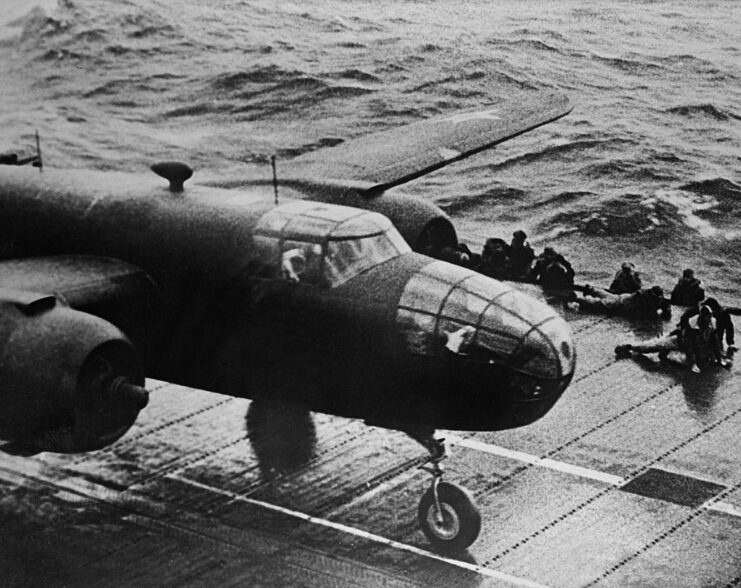
The Doolittle Raid of April 18, 1942 was the first air raid by the United States on the Japanese home islands. Under the leadership of Lt. Col. James Doolittle, 16 North American B-25B Mitchells took off from the USS hornet (CV-8) with destination Tokyo and other major Japanese cities. After reaching their destinations, they were to fly to China, where they could land safely.
While the attack caused minimal physical damage (only five patrol boats were lost while one major ship was damaged), its psychological impact on the country was profound. It showed how vulnerable Japan was to American air attack and boosted Allied morale. It also forced Japan to divert resources to defending its homeland, changing the military’s strategic priorities.
Despite the loss of all aircraft involved (15 were completely destroyed, while one was captured by the Soviets) and the fact that some crews were captured and executed, the Doolittle Raid was a significant propaganda victory for the American forces. It marked the beginning of a sustained air campaign against Japan that culminated in the devastating firebombing of Tokyo in 1945.
Planning the firebombing of Tokyo
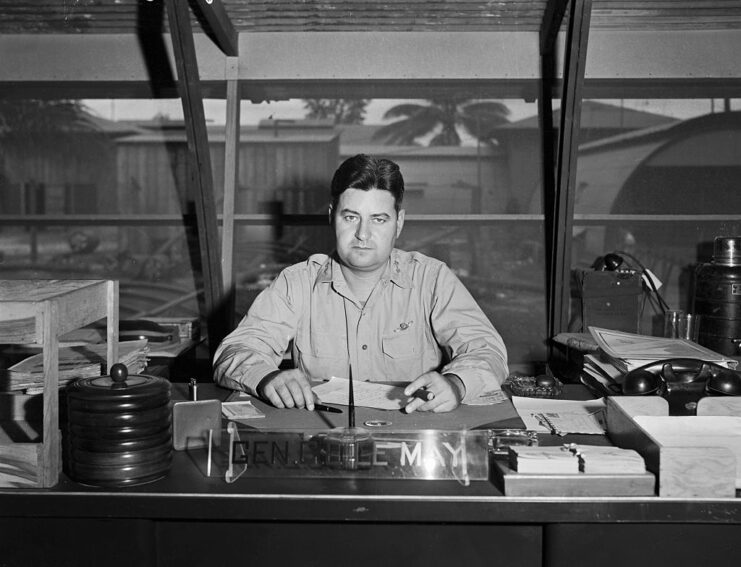
Planning the firebombing of Tokyo, codenamed Operation Meetinghouse, required careful preparation and strategic shifts. Major General Curtis LeMay, who took command of the XXI Bomber Command in January 1945, played a major role, realizing that precision bombing from high altitudes was ineffective due to Japan’s unpredictable weather and jet streams. So he proposed a radical change: low-altitude (5,000-foot) firebombing at night.
LeMay’s plan initially met with resistance due to concerns about the safety of the crew and the ethical implications of attacking civilian areas. However, the need to hasten Japan’s surrender and avoid a costly invasion outweighed these concerns, as did the knowledge that both the country’s night fighter force and nighttime anti-aircraft defenses were not as effective as the Japanese believed.
The aim of the operation was to destroy Tokyo’s industrial facilities, which were intertwined with residential areas. The US Army Air Forces (USAAF) B-29 Superfortresses were stripped of their defensive armament to increase the bomb load and reduce fuel consumption, which underscores the high risk of the mission.
9-10 March 1945: Bombing of Tokyo
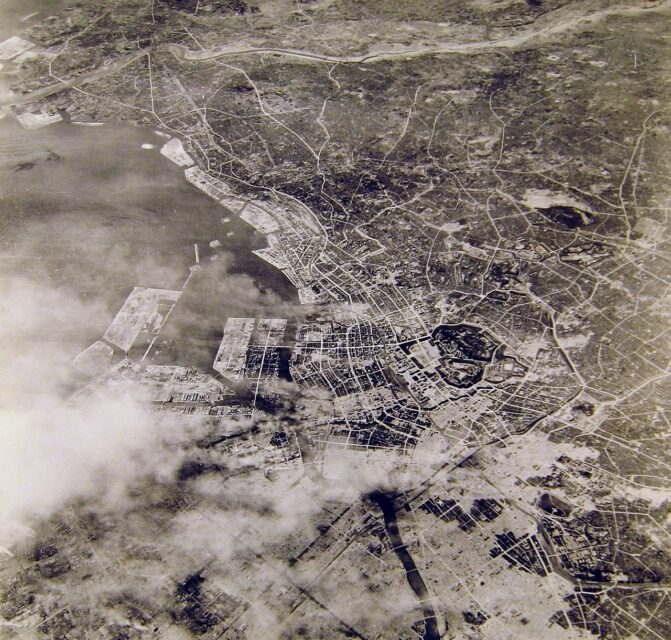
On the night of March 9-10, 1945, 334 B-29 Superfortresses took off from bases in the Marianas toward Tokyo.
Operation Meetinghouse began with scout planes dropping incendiary bombs to form a fiery “X” marking the target area. The main bomber fleet then dropped 1,665 tons of incendiary bombs – mostly M-69 napalm bomblets – over the densely populated Kōtō and Chūō districts. Of the total number of B-29 bombers involved in the raid, 282 hit their targets.
The bombs ignited a massive firestorm, the flames of which were fanned by strong winds of up to 45 km/h. The intense heat, which reached up to 850 °C, sparked a wildfire that destroyed 40.5 square kilometers of the city. The firebombing of Tokyo lasted several hours, with the American bombers flying at altitudes of between 1,500 and 2,700 meters to avoid the anti-aircraft fire.
The destruction was unprecedented and it became the most devastating air raid of World War II, even more devastating than that of Dresden and the atomic bombings of Hiroshima and Nagasaki.
Consequences of the firebombing of Tokyo
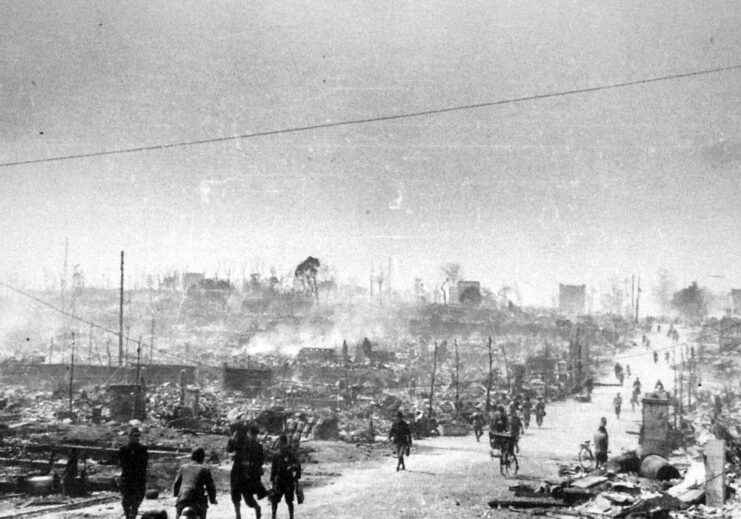
The consequences of the firebombing of Tokyo were catastrophic. An estimated 100,000 people were killed and over a million were left homeless. The firestorm destroyed 267,171 buildings and devastated Tokyo’s industrial and residential areas.
The psychological impact on the Japanese population was profound, as the air raid further shattered the illusion of invulnerability and exposed the disastrous state of Japan’s defenses.
International reactions were mixed. Some viewed the attack as a necessary step to hasten the end of World War II, while others condemned it as a war crime due to the high civilian casualties. The destruction of Tokyo’s industrial base severely impaired Japan’s war production capabilities and contributed to the eventual Allied victory.
Reconstruction efforts

Rebuilding Tokyo after the bombing was a monumental task. In the immediate postwar years, the city struggled with limited resources and a devastated infrastructure. The subsequent US occupation prioritized economic stabilization over comprehensive reconstruction, and it was not until the 1950s that Tokyo experienced significant economic growth, fueled by industrialization and international aid.
More from us: The March on Rome and Benito Mussolini’s efforts to transform Italy into a fascist nation
Memorials have been built to commemorate the victims of the firebombing of Tokyo, such as the cenotaph in Yokoamichō Park, where the ashes of 105,400 people are buried. The Tokyo Bombing and War Damage Center, founded by survivor Katsumoto Saotome, serves as a repository for documents and personal accounts, and ensures that the memory of the tragedy is preserved.



